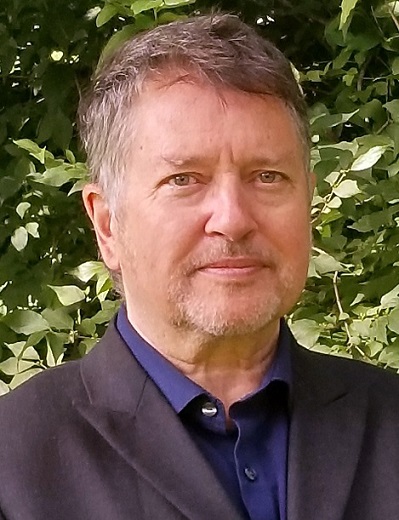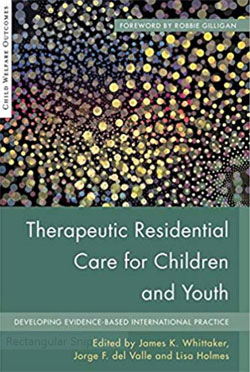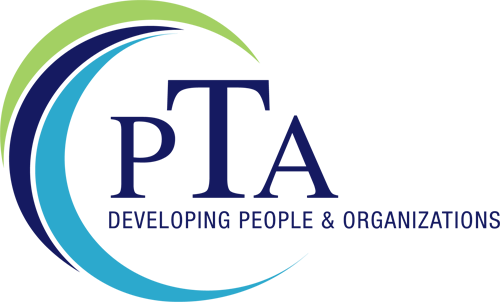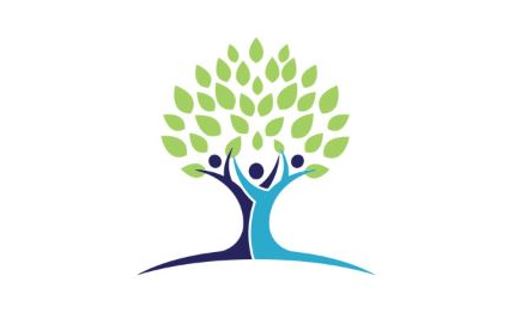CREATE YOUR ORGANIZATION’S UNIQUE THERAPEUTIC MODEL FOR TRAUMATIZED CHILDREN & YOUNG PEOPLE
Date added: 10/09/21
PATRICK TOMLINSON ASSOCIATES
Please email Patrick Tomlinson if you have any questions or would like to book a free exploratory meeting – [email protected]
AN ONLINE TRAINING & CONSULTANCY FRAMEWORK - BY PATRICK TOMLINSON (2020)

The architecture of the brain comes to represent the architecture of the social environment
Training and Consultancy Framework – Who is it for?
This training & consultancy framework is provided by Patrick Tomlinson Associates. It is for organizations that work with children and young people who have suffered trauma and other adversities. For example, residential care, foster care, and education services. It will most usually be participated in by Senior Executives, Directors, Managers, & Senior Clinicians. As the training and consultancy are provided online it is available worldwide. The size of the training group is usually 6-8 and can be made up of people from the same or different organizations. It is also possible to provide to a smaller group from just one organization. If an organization wishes to have a smaller group, e.g. 3-5 this can be arranged.
Why Have a Therapeutic Model?
For several decades it has been recognized that it is important in trauma-based services to have a well-articulated therapeutic model. Along with leadership, this has been identified as a key factor in well-run organizations (Tomlinson, 2019). Having a model and strong leadership are associated with positive outcomes for children and young people. Conversely, not having a clear model, ethos, or philosophy is often a factor in poor outcomes, bad practices, and negative outcomes.
Recent research on neurobiology, trauma and on the conditions necessary for recovery has affirmed the value of consistency brought about by a clear therapeutic approach. This is so clear now that in many parts of the world it is becoming a requirement for organizations in this field to have a therapeutic model. In some cases, children will no longer be placed with organizations that do not have one.
Having a model is important but not a guarantee of positive outcomes. It must be delivered in the context of good leadership and become embedded in the culture. All aspects of the organization must be congruent (Anglin, 2002, 2004) and aligned with it. This includes leadership, management, organisational policies and procedure, as well as any kind of therapy that is used in work with the children. This is referred to as a ‘whole system’ model and has been evidenced to be most effective (Kezelman and Stavropoulos, 2012, p.16).
Training and Consultancy Framework – What is it?
It is a year-long programme of training workshops; work discussion groups; and consultancy. The aim is to assist participants in learning about Therapeutic Model Development so that they can develop one in their organization.
The framework is like a workplace curriculum (Billett, 2005) for the development of a therapeutic model. It is designed as an active, learning and development process. Its aim is to significantly improve outcomes for the service users, organization and all stakeholders. This is achieved through the change process, which is model development. The development of a model is a complex task. The aim is to provide a structure for working on this task so that the work can be managed step by step.
1. Training Workshops
There are 22 1-hour sessions spaced over one year led by Patrick Tomlinson. The 22 subjects are listed below under 3 core areas. Naturally, the subjects overlap and must be considered as part of a whole. Reading material will be provided in advance of each workshop.
Note: The words child and children also refer to a young person and young people.
Part 1 - Leadership & Management
The Primary Task | The Organization’s Vision, Values, & Culture | Leadership
The Language of the Organization | Boundary Management
Trauma Re-Enactment & its Impact on the Organization
Independent Consultancy & Monitoring
Demands of the Work & Staff Support | Managing Change
Part 2 - Organizational Culture
The Relationship Between the Organization & Therapeutic Task
The Importance of Boundaries | The Nature of Authority
The Organization & Community | Creating a Sense of Community
Organization as ‘Family’ | Group Processes
Part 3 - Practice
Outcomes | The Importance of Theory | The Therapeutic Approach
Child Safety | The ‘Home’ Meeting
Promoting Responsible Children (Empowerment Processes)
The Therapeutic Approach in Part 3 includes many issues related to children’s day-to-day life,
Relationships between staff & children, & between children | Meeting children’s need for nurture | Establishing & managing boundaries | Working with crisis & critical incidents
Learning and education | Daily routines will be approached | Meeting cultural & religious needs | Working with trauma histories | Child assessment & care plans | Sexual development | Skills development including links with the individual community | Family relationships & involvement | Leaving care & transitions | Child referral process to the organization
2. Work Discussion Groups
There are 12 1-hour sessions, one per month chaired by Patrick Tomlinson. The aim is to look at the process of developing and implementing a model. Each participant will be able to bring live issues and challenges for exploration and practical solutions. This is mutually supportive through sharing experiences and working together.
3. Consultations
These 1-1, 1-hour meetings are provided by Patrick Tomlinson twice per month. Where there is more than one person from the same organization it could be in pairs or a group. The aim is to directly support the individual in their work. It is an opportunity to look in detail at the model development work. Additional reading material can be provided for specific individual needs.
The framework can be tailor-made according to individual needs. For example, the 22 1-hour training workshops could be changed to 2 hours. Additional consultancy can be provided as well as a reviewing and writing service.
Please email Patrick Tomlinson if you have any questions or would like to book a free exploratory meeting – [email protected]
Also, to help clarify your requirements and questions you can download an application form at the bottom of this page and return to the email above.
Develop your own Model v Import a Model
This training & consultancy framework is for organizations who aim to develop their unique model. Since its inception in 2008, Patrick Tomlinson Associates has always believed in the process of helping organizations to do this. Drawing upon vast research-informed evidence we know that effective approaches are those that incorporate and successfully implement the most relevant practices. Your model will have a robust theoretical base.
There are several reasons why creating your unique model can be so important.
1. Creativity – people and organizations are at their most productive and resilient when creativity is strong. In the case of trauma, creativity and imagination are key factors in recovery. Whatever we create in the organization’s culture has a great potential to be reflected in the work with young people. Therefore, if the organization is immersed in a creative process this has excellent benefits. Creativity is tied up in being original and unique.
2. Ownership – is literal and metaphorical. The intellectual property of the model is owned by the organization. It is an asset and valuable. There are no ongoing licensing fees to pay. However, ownership is a much broader concept. The work involved in the creative process results in a great sense of, ‘this is ours we made this’. This sense of ownership is also central to the therapeutic task. People feel connected and take ownership. It contributes to a culture where ownership and responsibility are at the centre. This is also vital for the development of children and young people.
3. Integration – Organizations, where all the different parts work together well, are most likely to achieve positive outcomes. In services for traumatized children and young people, this provides a model that is often the opposite of their experiences in families. In any field, an integrated organization is likely to achieve good results. In therapeutic services for children, integration is directly relevant to the task. Creating a therapeutic model can be a way of helping to integrate the organization.
Research now shows that resolution of trauma equates with neural integration. It also shows that longstanding trauma can be resolved, and its negative intergenerational effects intercepted. But for this to occur, mental health and human service delivery (i.e. as well as direct treatments) need to reflect the current research insights. Experience is now known to impact brain structure and functioning, and in the relational context of healing this includes experience of services. Neural integration is not assisted – indeed is actively impeded – by unintegrated human services which are not only compartmentalised, but which lack basic trauma awareness. (Kezelman and Stavropoulos, 2012, p.xxx)
Daniel Siegel (2006) says,
The central idea of interpersonal neurobiology is that integration is at the heart of well-being.
The key task with children who have suffered complex trauma is helping them achieve a healthy level of integration. We know that the nature of the children’s environment is also central to the therapeutic process. Therefore, having an integrated organizational environment is essential.
4. Learning from Experience – Strong organizations and people are ones who learn from experience, or as John Dewey (1933, p.78) said, ‘from reflecting on experience’. Becoming a learning organization is central to establishing a culture that is always developing, adapting, and progressing. The model creation process is a great way of learning. This is also so important to the therapeutic task. The nature of childhood trauma is that life becomes fearful. The children need positive new experiences. These are provided most effectively when the people around them are creative, evolving, and growing. When the adults in the organization are emersed in a creative task it has a powerful effect on the culture and young people.
5. Cultural Sensitivity – There are many universal principles in therapeutic work and trauma recovery. However, it is also essential to recognize the importance and influence of the cultural context. In different cultures, the meanings attached to everyday life and routines vary. The language of therapeutic work can vary significantly from one context to another. Each organization has its unique history and culture, as well as the local and national culture it sits within. The same applies to people. The way we create therapeutic environments needs to be culturally sensitive – so that there aren’t unhelpful clashes of beliefs, values and customs. Therefore, it can be most helpful if models evolve out of a culture, rather than be imported from outside of it. Taking account of all this is part of creating a unique model.
The Value & Benefits of Having a Clearly Articulated Therapeutic Model
These are some of the benefits, which add value to an organization and its stakeholders.
1. Having a model clarifies the task and reduces confusion. It improves consistency, congruence, performance, and development. It will help improve efficiency, reducing costs and crisis. There will be improved outcomes for all stakeholders.
2. A high-quality model will further consolidate the organization’s position as a market leader. This will help attract referrals, funding and good quality staff.
3. The organization can grow to become considered as an authority and ‘expert’ in its field. This provides great potential for influence and growth. It can open the door to diverse opportunities, such as expansion, licensing the model, and developing a training and consultancy service.
4. In some countries having an articulated therapeutic model is becoming a Government requirement, influencing the placement of children. Therefore, not having a model could jeopardize an organization’s future.
5. The copyrighted model is an asset of intellectual property adding value to the organization.
6. A model creates a shared language and processes. This helps integrate different professional disciplines.
7. It is highly beneficial for organizations to understand trauma and how to respond to it. This is becoming trauma-Informed.
8. The development work is a helpful way of reviewing the organization’s culture and practice.
9. The work involved will be a positive team-building experience. It helps create a shared vision, values, and commitment.
10. The involvement of the organization in the creation process leads to a high level of engagement and ownership.
 Patrick Tomlinson has been involved in developing therapeutic models for over 25 years. He began as a residential care worker and has since been a manager, Director, CEO, consultant, and mentor. He is the author/co-author/editor of numerous papers and books. He is a qualified clinician, strategic leader, and manager. Working in many countries, he has helped develop therapeutic models that have gained national and international recognition.
Patrick Tomlinson has been involved in developing therapeutic models for over 25 years. He began as a residential care worker and has since been a manager, Director, CEO, consultant, and mentor. He is the author/co-author/editor of numerous papers and books. He is a qualified clinician, strategic leader, and manager. Working in many countries, he has helped develop therapeutic models that have gained national and international recognition.
His work began in a pioneering and internationally renowned therapeutic community – The Cotswold Community, UK. Then he worked with Mary Walsh, CEO and Founder at SACCS, UK, to create the renowned SACCS Recovery Programme. This included the publication of 5 books. In 2013 he worked with the Lighthouse Foundation in Melbourne to develop and write a book on their Therapeutic Family Model of Care. Since then Patrick has continued to work with organizations to develop their models in the UK, Australia, Ireland, Portugal, and Japan. This work has highlighted the importance of cultural sensitivity.
Please email Patrick Tomlinson if you have any questions or would like to book a free exploratory meeting – [email protected]
Testimonials
 In Australia, the most clearly articulated model of Therapeutic Residential Care is that offered by the Lighthouse Foundation (Ainsworth 2012; Barton, Gonzales and Tomlinson 2012) that owes much to the Cotswold Community in the UK.
In Australia, the most clearly articulated model of Therapeutic Residential Care is that offered by the Lighthouse Foundation (Ainsworth 2012; Barton, Gonzales and Tomlinson 2012) that owes much to the Cotswold Community in the UK.
McNamara, P.M. (2015) A New Era in the Development of Therapeutic Child Care in the State of Victoria, in, Whittaker, J.K., del Valle, J.F. and Holmes, L. (2015) Therapeutic Residential Care for Children and Youth: Developing Evidence-Based International Practice, London and Philadelphia: Jessica Kingsley Publishers
“From the introduction through the final appendices, I was struck by the constant and integrated presence of thinking, feeling and reflection as integral to meeting the needs of young people, whether at an individual or organisational level… This book offers vision and motivation to those with requisite courage to work towards a more humane system of care for children and young people.”
Therapeutic Residential Child Care for Children and Young People: An Attachment and Trauma-Informed Model for Practice (Susan Barton, Rudy Gonzalez and Patrick Tomlinson, 2012) London, Jessica Kingsley.
Excerpt of a book review, by Laura Steckley, Course Director, MSc Advanced Residential Child Care, Glasgow School of Social Work, Scotland
 His deep knowledge of the development of therapeutic models and his vast field experience made us believe that, in Portugal, and our Residential Home it would be possible to start this process of changing the paradigm of generalist residential care. After an unprecedented approval of an application to Portugal Social Innovation, Patrick was selected by us as the main mentor in the co-construction of a therapeutic intervention model of the Residential Service (for 40 girls) for which I am responsible. Since then it has been a very intense and exciting experience.
His deep knowledge of the development of therapeutic models and his vast field experience made us believe that, in Portugal, and our Residential Home it would be possible to start this process of changing the paradigm of generalist residential care. After an unprecedented approval of an application to Portugal Social Innovation, Patrick was selected by us as the main mentor in the co-construction of a therapeutic intervention model of the Residential Service (for 40 girls) for which I am responsible. Since then it has been a very intense and exciting experience.
The technical and scientific support he provides is incredible. Patrick guarantees support through a vast bibliography not only published by himself, but also by other leading authors, through individual and team supervision on a very regular basis. It allows our professional development and our critical sense. The way of working is in permanent collaboration and co-construction.
I must highlight not only Patrick’s high competence but also his characteristics of attention, support and facilitation of personal and professional reflection processes. In this way and with total freedom and autonomy Patrick has been able to create an opportunity for change, not only at our Home but in each of the people with whom he works more closely, facilitating our professional maturity. Despite not living in Portugal, he has always ensured a physical presence throughout this process and high proximity in meeting our needs and answering our doubts. I strongly recommend Patrick to all Residential Care Homes and professionals in this field. Ivone Soares de Almeida - Technical Director, Porto
 I have had the absolute pleasure of working with Patrick. Patrick is someone who truly models the model. He is kind, caring, interested, reflective, and passionate. Patrick has a unique way of bringing out the best of people and truly trying to see the potential and unique skills of those he works with; including being strengths-based.
I have had the absolute pleasure of working with Patrick. Patrick is someone who truly models the model. He is kind, caring, interested, reflective, and passionate. Patrick has a unique way of bringing out the best of people and truly trying to see the potential and unique skills of those he works with; including being strengths-based.
I always leave my conversations and interactions with Patrick feeling listened to, stretched in the best possible way, and enriched. Patrick is always learning and seeking knowledge, and this is not only impressive but also is wonderful as he is able to integrate so many ideas and concepts from a range of disciplines to create interesting and important links and ways forward.
As well as always striving for better and best practice, Patrick is a keen collaborator, and therefore really feels like a team player. What I am often struck by is how containing and calm and thoughtful Patrick is, which is a rare and crucial quality for leaders, especially in the world of trauma. This feeling and sentiment has been echoed to me by many people whom Patrick has worked with. Patrick has a combination of high-quality leadership skills, years of experience within a range of contexts including residential services, and expertise within the area of trauma and attachment- making for a formidable combination; yet does this with humility and humanness.
He is integrity, alongside vision. Patrick is certainly someone I have really enjoyed working with and would go to for advice; as well as someone I would recommend highly and would love to work with again. Dr. Karen Treisman - Clinical Psychologist, trainer, & author of Working with relational & developmental trauma in children & adolescents
 I had the good fortune to benefit from Patrick being a senior manager in a therapeutic residential care setting, early on in my career. During this time, I developed my practice and understanding through his high-quality coaching and mentoring which ultimately supported me into management. Patrick has a deep understanding of therapeutic model development, organisation dynamics and leadership. I continue to draw on his teachings in my senior management position to this day and he is a go-to mentor, skillful at facilitating self-reflection.
I had the good fortune to benefit from Patrick being a senior manager in a therapeutic residential care setting, early on in my career. During this time, I developed my practice and understanding through his high-quality coaching and mentoring which ultimately supported me into management. Patrick has a deep understanding of therapeutic model development, organisation dynamics and leadership. I continue to draw on his teachings in my senior management position to this day and he is a go-to mentor, skillful at facilitating self-reflection.
Emma Griffiths - CEO at Gloucestershire Counselling Service, UK
 I have had the pleasure to work collaboratively with Patrick Tomlinson Associates for over 3 years. The key to the success of the work has been the way we have established a strong working relationship across international boundaries. Patrick has brought a variety of essential skills to the projects that we have worked on. He has demonstrated great knowledge and expertise, reliability, high-quality work, and has always delivered on time. His service has been very productive and cost-effective, due to his ability to systematically work through any potential challenges that would take a less evolved individual many additional months. We are now in a position where we are ready to achieve our strategic aim of transferring our practice model to organisations across Australia and then internationally, thanks to the enormous contribution of Patrick Tomlinson. Rudy Gonzalez - Executive Director (Former), Lighthouse Foundation, Australia
I have had the pleasure to work collaboratively with Patrick Tomlinson Associates for over 3 years. The key to the success of the work has been the way we have established a strong working relationship across international boundaries. Patrick has brought a variety of essential skills to the projects that we have worked on. He has demonstrated great knowledge and expertise, reliability, high-quality work, and has always delivered on time. His service has been very productive and cost-effective, due to his ability to systematically work through any potential challenges that would take a less evolved individual many additional months. We are now in a position where we are ready to achieve our strategic aim of transferring our practice model to organisations across Australia and then internationally, thanks to the enormous contribution of Patrick Tomlinson. Rudy Gonzalez - Executive Director (Former), Lighthouse Foundation, Australia
 I worked with Patrick when he became Interim CEO at Three Steps. We worked hard on establishing our model. Everyone was included, all staff, the young people and adults in our care. Mission and values were created, and the entire organization responded and endorsed them. This became a unique driving force to continue improving quality. A full structure review took place ensuring clarity on roles and responsibilities, and oversight measures. This provided containment to the organisation. Through this cultural change, everyone began wanting to be a part of creating therapeutic environments, for all to flourish. The head office which was previously all one white colour was transformed with child-friendly spaces, fingerprint trees, children’s art, and sensory integration items. The children’s homes became more colourful, welcoming and homely. During the two years that I worked with Patrick; I can only describe what took place as a process of transformational change.
I worked with Patrick when he became Interim CEO at Three Steps. We worked hard on establishing our model. Everyone was included, all staff, the young people and adults in our care. Mission and values were created, and the entire organization responded and endorsed them. This became a unique driving force to continue improving quality. A full structure review took place ensuring clarity on roles and responsibilities, and oversight measures. This provided containment to the organisation. Through this cultural change, everyone began wanting to be a part of creating therapeutic environments, for all to flourish. The head office which was previously all one white colour was transformed with child-friendly spaces, fingerprint trees, children’s art, and sensory integration items. The children’s homes became more colourful, welcoming and homely. During the two years that I worked with Patrick; I can only describe what took place as a process of transformational change.
Eilis Carroll - CEO/Director of Care Services (former), Three Steps Residential Assessment and Intervention, Ireland
 I have been leading a 3-year research project funded by the Japanese Ministry of Health, Labour and Welfare. We are researching worldwide, effective approaches in working with traumatized children in residential and foster care. I have consulted with Patrick Tomlinson for over 2 years by email and he has visited Japan in 2012 and 2013 to work on the project. His advice and assistance have been so great, helpful, reliable, prompt, kind and warm and fit to Japanese society. He is the very right person to quickly understand the situation and the problems of looked after children in Japan, visiting several children's homes, talking with carers of children's homes, foster parents, senior executives, and professionals.
I have been leading a 3-year research project funded by the Japanese Ministry of Health, Labour and Welfare. We are researching worldwide, effective approaches in working with traumatized children in residential and foster care. I have consulted with Patrick Tomlinson for over 2 years by email and he has visited Japan in 2012 and 2013 to work on the project. His advice and assistance have been so great, helpful, reliable, prompt, kind and warm and fit to Japanese society. He is the very right person to quickly understand the situation and the problems of looked after children in Japan, visiting several children's homes, talking with carers of children's homes, foster parents, senior executives, and professionals.
Dr. Hisayo Kaihara - MD (Child Psychiatrist), Tokyo, Japan
 I have known Patrick for 25 years. I have worked with him in several organisations in the UK and Ireland. These organizations deliver therapeutic services to young people who have attachment and/or learning difficulties. Patrick has always sought to develop models of care that provide a secure base to contain, orientate and inspire the individuals and teams who carry out such important and difficult work. He understands how leadership and management structures need both to reflect the model of care and to facilitate its implementation.
I have known Patrick for 25 years. I have worked with him in several organisations in the UK and Ireland. These organizations deliver therapeutic services to young people who have attachment and/or learning difficulties. Patrick has always sought to develop models of care that provide a secure base to contain, orientate and inspire the individuals and teams who carry out such important and difficult work. He understands how leadership and management structures need both to reflect the model of care and to facilitate its implementation.
He has a proven track record of delivering positive organisational change that results in enduring and successful outcomes for clients and staff. He has an impressive aptitude for identifying core issues and developing practical plans of action.
Paul Van Heeswijk - Consultant Child and Adolescent Psychotherapist
 Patrick has been very helpful in assisting with the therapeutic model development for the service I lead. It has been a tough but very fulfilling journey. Being mentored by Patrick has definitely been of most importance for the achievement of positive results.
Patrick has been very helpful in assisting with the therapeutic model development for the service I lead. It has been a tough but very fulfilling journey. Being mentored by Patrick has definitely been of most importance for the achievement of positive results.
Rui Lopes - Director de Casa de Acolhimento Residencial, Lisbon Area, Portugal
References and Further Reading
Anglin, J. (2002) Pain, Normality, and the Struggle for Congruence: Reinterpreting Residential Care for Children and Youth, New York: The Haworth Press Inc.
Anglin, J. P. (2004) Creating “Well-Functioning” Residential Care and Defining Its Place in a System of Care, in, Child and Youth Care Forum, 33 (3), June 2004, Canada: Human Services Press, Inc.
Barton, S., Gonzalez, R. and Tomlinson, P. (2012) Therapeutic Residential Care for Children and Young People: An Attachment and Trauma-informed Model for Practice, London and Philadelphia: Jessica Kingsley Publishers
Billett, S. (2005) Constituting the Workplace Curriculum, in, Journal of Curriculum Studies, 37(3)
Dewey, J. (1933) How we think, Boston, D. C.: Heath & Co
Kezelman, C. and Stavropoulos, P. (2012) The Last Frontier: Practice Guidelines for Treatment of Complex Trauma and Trauma Informed Care and Service Delivery, Australia: Adults Surviving Child Abuse (ASCA)
McNamara, P.M. (2015) A New Era in the Development of Therapeutic Child Care in the State of Victoria, in, Whittaker, J.K., del Valle, J.F. and Holmes, L. (2015) Therapeutic Residential Care for Children and Youth: Developing Evidence-Based International Practice, London and Philadelphia: Jessica Kingsley Publishers
Siegel, D.J. (2006) Series Editor’s Foreword, in, Ogden, P., Minton, K. and Pain, C. Trauma and the Body, New York: Norton
Steckley, L. (2013) Book Review, in, The British Journal of Social Work, February 2013
Tomlinson, P. (2019) What a Therapeutic Model is and Why it is Important to Have One
https://www.patricktomlinson.com/what-a-therapeutic-model-is-and-why-it-is-important-to-have-one-patrick-tomlinson-2019/17
Tomlinson, P. (2008) Assessing the Needs of Traumatized Children to Improve Outcomes, in, Journal of Social Work Practice, Vol. 22, No. 3, pp. 359–374
https://www.patricktomlinson.com/assessing-the-needs-of-traumatized-children-to-improve-outcomes-patrick-tomlinson-2007/55
Files
- Download a Free PDF
- What a Therapeutic Model is and Why it is Important to have One
- Models in Therapeutic Work with Traumatized Children - Parts 1 & 2
Please leave a comment
Next Steps - If you have a question please use the button below. If you would like to find out more
or discuss a particular requirement with Patrick, please book a free exploratory meeting
Ask a question or
Book a free meeting














